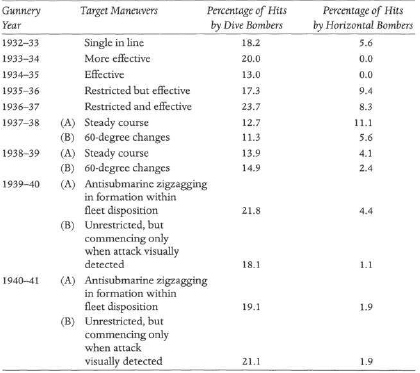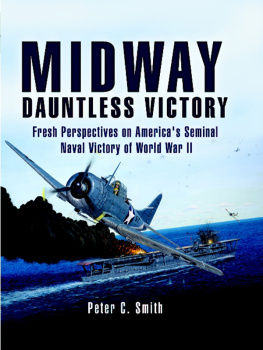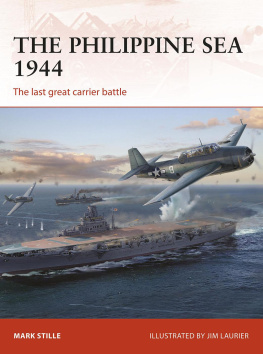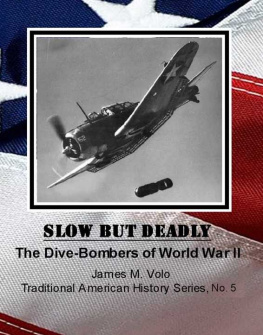The type designations were established by the secretary of the navy on 17 July 1920, when he isssued a directive which prescribed a standard nomenclature for identifying all ships and aircraft in the navy. In compliance with this directive, all heavier-than-air craft were subsequently designated by the letter V, with the following type letters assigned to designate the various classes:
| F | Fighter |
| O | Observation |
| S | Scout |
| P | Patrol |
| T | Torpedo and Bombing |
| G | Fleet (Utility) |
In March 1922, a change was promulgated which added the identity of the manufacturer and the model number. Initially these preceded the class (mission) designation. Thus the first observation plane built by the Glen L. Martin Company became the MO. Numbers appearing between the letters indicated subsequent designs (except for the first model, where the 1 was omitted). Modifications to the basic design were also identified by number, using a dash to separate the change number from the class letter; for example, the second observation plane designed by Martin would be the M20-1, with the first modification becoming the M20-2.
The order of the lettering was reversed a year later (on 10 March 1923), so that the type/class were interchanged with the manufacturer; for example, the sixth fighter built by Curtiss became the F6C-1. The reversal in order was not retroactive and applied to new aircraft only. This system of identifying specific aircraft designs remained in effect until 1962.
No dissertation on the evolution of carrier aviation in the U.S. Navy would be complete without some mention of the Norden bombsight initiated and developed by the Bureau of Ordnance. Contrary to viewpoint frequently expressed in the public press, the navys interest and concern for aerial bombardment preceded Billy Mitchells well choreographed sinking of the Ostfriersland. A year and half earlier, on 15 January 1920, the Bureau of Ordnance requested that Carl L. Norden, a leading authority on gyroscopes, develop a stabilized bombsight, which was completed in the spring of 1921 under the designation of the Mark III bombsight. This device could not be used against a moving target, and as Norden was quick to point out, an enemy ship would not be so obliging as to remain still when under attack, leading to a follow-on contract for a more advanced sight, the Mark XI, which took a number of years to develop and perfect.
The acceptance of Nordens second model, the Mark XI bombsight, in 1929 coincided (more or less) with the delivery of the navys first experimental dive bomber, the XT5M-1. For the next several years the navy pursued the development of dive and horizontal bombing in parallel.
The first gunnery practice involving the Mark XI was conducted by VT-2 in January 1932. The high degree of accuracy obtained during this exercise was facilitated by squadrons commander, Lt. Cdr. John J. Ballentine, who had obtained extensive experience with the new bombsight while working on its development as the officer in charge of the aviation detachment at the Naval Proving Ground, Dahlgren, Virginia.
By January 1933, the navy began testing both methods against a maneuvering target, the radio-controlled ex-battleship Utah. Although the results of this practice confirmed the superiority of dive bombing, the horizontal bombers still made a credible showing as indicated by the following data:

Formation bombing of the Utah by both horizontal bombers and dive bombers was subsequently scheduled on a regular basis during the interwar period so that by 1941 the fleet had nine years experience in bombing a maneuvering target.
As can be seen from the Summary of Bombing Exercises shown in table B.1, dive bombing outperformed horizontal bombing by a considerable margin in every case except for the one year (1937-38) when the Utah remained on a steady course. As the altitude of the horizontal bombers increased to avoid improvements in antiaircraft fire (from 8-10,000 feet in 1932-37 to 12,000 feet in 1937-38, and 16,000 feet thereafter), their results got worse, even though they were now using the improved Mark XV bombsight.

Source: Robert V. Brown, "The Navys Mark IV (Norden) Bomb Sight: Its Development and Procurement 1920-45"(Washington, D.C.: Department of the Navy,1946).
Thomas Wildenberg, a resident of Silver Spring, Maryland, is a writer and naval historian whose special interest is the U.S. Navy between the world wars. He is a frequent contributor to the Naval Aviation Museums Foundation, has written a number of articles on the development of the interwar navy, and is the author of Gray Steel and Black Oil: Fast Tankers and Replenishment at Sea in the U.S. Navy, 19121992.
Mr. Wildenberg was recently appointed the National Air and Space Museums Ramsey Fellow for naval aviation and is currently at work on a biography of Joseph Mason Reeves.
The Naval Institute Press is the book-publishing arm of the U.S. Naval Institute, a private, nonprofit, membership society for sea service professionals and others who share an interest in naval and maritime affairs. Established in 1873 at the U.S. Naval Academy in Annapolis, Maryland, where its offices remain today, the Naval Institute has members worldwide.
Members of the Naval Institute support the education programs of the society and receive the influential monthly magazine Proceedings or the colorful bimonthly magazine Naval History and discounts on fine nautical prints and on ship and aircraft photos. They also have access to the transcripts of the Institutes Oral History Program and get discounted admission to any of the Institute-sponsored seminars offered around the country.
The Naval Institutes book-publishing program, begun in 1898 with basic guides to naval practices, has broadened its scope to include books of more general interest. Now the Naval Institute Press publishes about seventy titles each year, ranging from how-to books on boating and navigation to battle histories, biographies, ship and aircraft guides, and novels. Institute members receive significant discounts on the more than eight hundred Press books in print.
Full-time students are eligible for special half-price membership rates. Life memberships are also available.
For a free catalog describing Naval Institute Press books currently available, and for further information about joining the U.S. Naval Institute, please write to:
Member Services
U.S. NAVAL INSTITUTE
291 Wood Road
Annapolis, MD 21402-5034
Telephone: (800) 233-8764
Fax: (410) 571-1703
Web address: www.usni.org
Archives and Collections Consulted
Marine Corps Museum, Navy Yard, Washington, D.C.
Aviation Subject Files, Reference Section.
Rowell File, Manuscript Collection.
National Air and Space Museum, Archives Division, Washington, D.C.
Aircraft Files, Curtiss-Wright Collection.
Bruce G. Leighton Subject Files.
National Archives, Washington, D.C./College Park, Md.
Hearings of the General Board, Records and Transcripts, Microfilm Series M1963, RG 80.
Records of the Bureau of Aeronautics, RG 72:
Contract Correspondence, 192639
Confidential Correspondence Files, 192244
Final Reports of Trials and Inspections of Naval Aircraft, 193844











